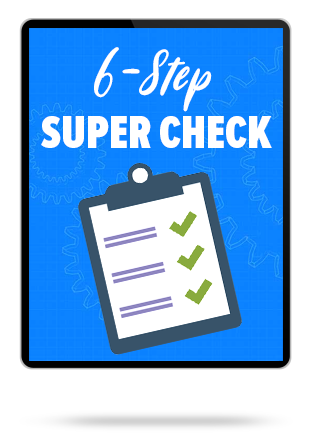The best time to retire for tax purposes in Australia is largely determined by superannuation rules. In saying that, the level of retirement income you need will also be a consideration. This article will assume that you have adequate funds to retire and are simply seeking the best time to retire for tax purposes.
Retiring in Australia has many definitions, both legally and practically. Retirement can mean stopping work, being able to access superannuation or being eligible for Centrelink Age Pension payments. Each person has a different interpretation of the word retirement. So, taking all of this into account, when in the best time to retire for tax purposes in Australia?
Best Time To Retire for Tax Purposes in Australia
The best time to retire for tax purposes in Australia is generally once you attain age 60, as it is at this stage that you will have tax-free access to your superannuation. The best time of the year to retire for tax purposes in Australia is once you have earned around $18,200 worth of taxable income for the year, because this is currently the tax-free threshold. Once you earn above this amount, you begin paying income tax.
Another way of looking at the best time to retire is whenever you can afford to retire, which will be based on your desired retirement income and level of superannuation and investment assets. The tax-free threshold in the current financial year in Australia is $18,200. This means an individual can receive income of up to $18,200 per year without paying any tax. If you are a member of a couple, you can receive income $36,400 per year, combined, without paying tax. Therefore, if you were retired, you can receive assessable income (e.g. interest, dividends, rent) of $18,200 per person, at any age.
Related Article: How Much Super Do I Need to retire at 60?
And, it gets better for seniors and pensioners. If you are eligible for the Senior Australian Pension Tax Offset (SAPTO), you can receive income of up to $33,000 per person, per year, without paying tax. If you think you might be eligible for the SAPTO, use this calculator to figure out your offset amount.
Best Time in Financial Year to Retire
The best time in the financial year is just before you reach a new tax bracket. The first tax bracket is $18,200 which is the tax-free threshold. Earning up to $18,200 and then retiring will mean you pay no tax for the year. The next tax bracket is $45,000; so earning just below $45,000 for the financial year and then retiring would be your next best option, followed by just under $120,000, then just under $180,000. The best time in the financial year to retire will ultimately depend on how much you earn and how much more you would like to save towards your retirement.
Related Article: How Much Do I Need to Retire on $100,000 Per Year?
However, if I was to retire, I would probably retire at the beginning or mid-December – leading into the Australian summer holidays and festive season. Is there really a better time to live in Australia!? December is probably also the most common time in the financial year to retire, too.
Want the team at SuperGuy to help you with your superannuation & retirement plan?
Click below to learn more.
Best Age To Retire for Tax Purposes Super
The best age to retire for tax purposes in Australia when it comes to superannuation is age 60. Generally, all withdrawals over age 60 from superannuation are received completely tax free. The only exception is if your balance includes a taxable (untaxed) element. You can contact your superannuation provider to see if your balance includes a taxable (untaxed) component. Your superannuation balance consists of one or more of the following tax elements: tax-free, taxable (taxed) and taxable (untaxed). The table below details how each of these elements are taxed for people aged 60 or over.
| Tax Element | Type of Withdrawal | Tax Rate (incl. Medicare levy) |
|---|---|---|
| Tax-free | Lump Sum | 0% |
| Tax-free | Income Stream | 0% |
| Taxable (taxed) | Lump Sum | 0% |
| Taxable (taxed) | Income Stream | 0% |
| Taxable (untaxed) | Lump Sum | Lower of Marginal Tax Rate and 17% (up to untaxed cap plan) |
| Taxable (untaxed) | Income Stream | Marginal Tax Rate less 10% offset |
All withdrawals made from superannuation must be made proportionately from each tax component. If you are over age 60 and your super balance does not include a taxable (untaxed) element, you can receive as much super income as you like without paying tax. This is what makes age 60 the best time to retire for tax purposes in Australia. The amount of super that you can withdraw tax-free while under age 60 is based on your age and the tax elements that make up your balance. Regardless of age, the tax-free element is always received tax free.
Related article: Do Self-Funded Retirees Pay Tax In Australia?
There are also ways to have access to your super and then return to work, as this video explains:
Related Articles: Does Taxable Income Include Super?
The age that you can access your superannuation will help determine the best age to retire in Australia. The preservation age calculator below shows your superannuation preservation age, which is the earliest age that you can access your super. Depending on your employment status, your access to super may be limited, even if you have reached your preservation age.
Best Time to Retire for Tax Purposes Conclusion
The best time to retire for tax purposes in Australia is generally age 60. However, as there are so many variables and retirement planning strategies, the best time to retire for each individual for tax purposes and the best retirement age will differ. The table below details some of the factors that can allow you to receive a higher income without paying tax:
| Factor | Reason |
|---|---|
| Share Dividend Franking Credits | Tax already paid on the some or all of the dividend by the company – meaning you receive a tax credit for the tax already paid |
| SAPTO | A tax offset for seniors and pensioners to reduce tax that would otherwise be payable |
| Super Pension Income Offset | A tax offset equal to 15% of the taxable (taxed) element while under age 60 |
| Low Rate Cap Amount | Allows lump sum super withdrawals to be tax free on the taxable (taxed) element while under age 60 – up to the indexed lifetime cap amount |
Hopefully this has helped you determine the best time to retire for tax purposes in Australia.


